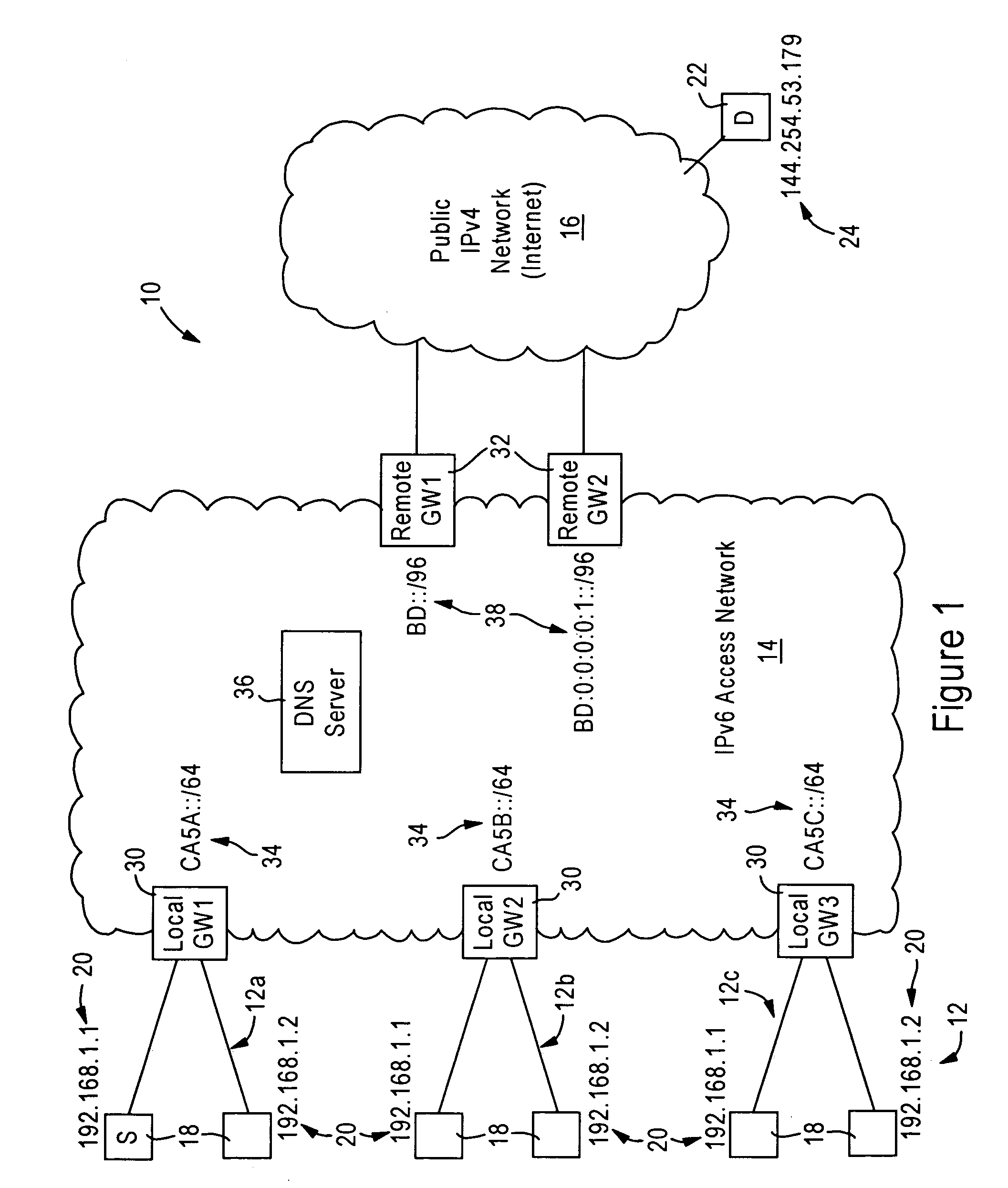Arrangement for reaching IPv4 public network nodes by a node in a IPv4 private network via an IPv6 access network
a private network and access network technology, applied in the field of interoperability between ipv4 networks and ipv6 networks, can solve the problems of double the size of packets, users of ipv6 access networks will not have any connectivity, and the modification of existing nats to include ipv6 routers to include the 6to4 mechanism may not be practical,
- Summary
- Abstract
- Description
- Claims
- Application Information
AI Technical Summary
Benefits of technology
Problems solved by technology
Method used
Image
Examples
Embodiment Construction
[0025]FIG. 1 is a diagram illustrating an internetworking system 10 including private IPv4 networks 12 (e.g., 12a, 12b, 12c) at respective subscriber premises, an IPv6 access network 14, and a public IPv4 network 16, according to an embodiment of the present invention. Each private IPv4 network 12 is “private” in that each network node 18 within a corresponding private IPv4 network 12 uses a prescribed private address 20 (e.g., “192.168.1.1”) as specified by the RFC 1918, entitled “Address Allocation for Private Internets”. In contrast, the public IPv4 network 16 is “public” in that each network node 22 must use a valid, globally-unique IPv4 address 24 (e.g., “144.254.53.179”), as described in the RFC 1918. An example of the public IPv4 network 16 is the Internet.
[0026]The disclosed embodiment enables deployment of a private IPv4 network 12 at a customer premises, with access to a wide-area IPv4 network 16 such as the Internet, using an IPv6 network 14 as an access network. The term...
PUM
 Login to View More
Login to View More Abstract
Description
Claims
Application Information
 Login to View More
Login to View More - R&D
- Intellectual Property
- Life Sciences
- Materials
- Tech Scout
- Unparalleled Data Quality
- Higher Quality Content
- 60% Fewer Hallucinations
Browse by: Latest US Patents, China's latest patents, Technical Efficacy Thesaurus, Application Domain, Technology Topic, Popular Technical Reports.
© 2025 PatSnap. All rights reserved.Legal|Privacy policy|Modern Slavery Act Transparency Statement|Sitemap|About US| Contact US: help@patsnap.com



